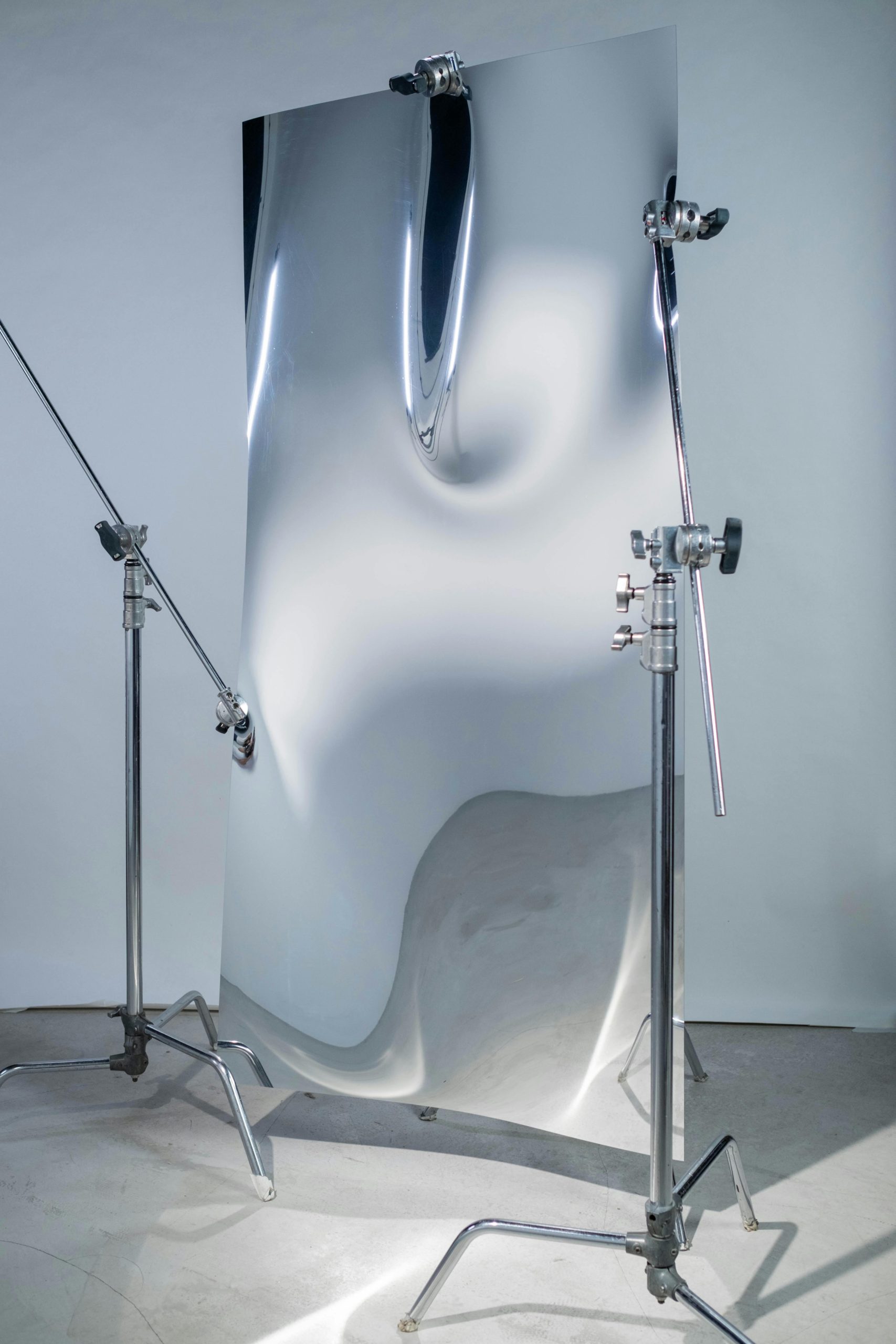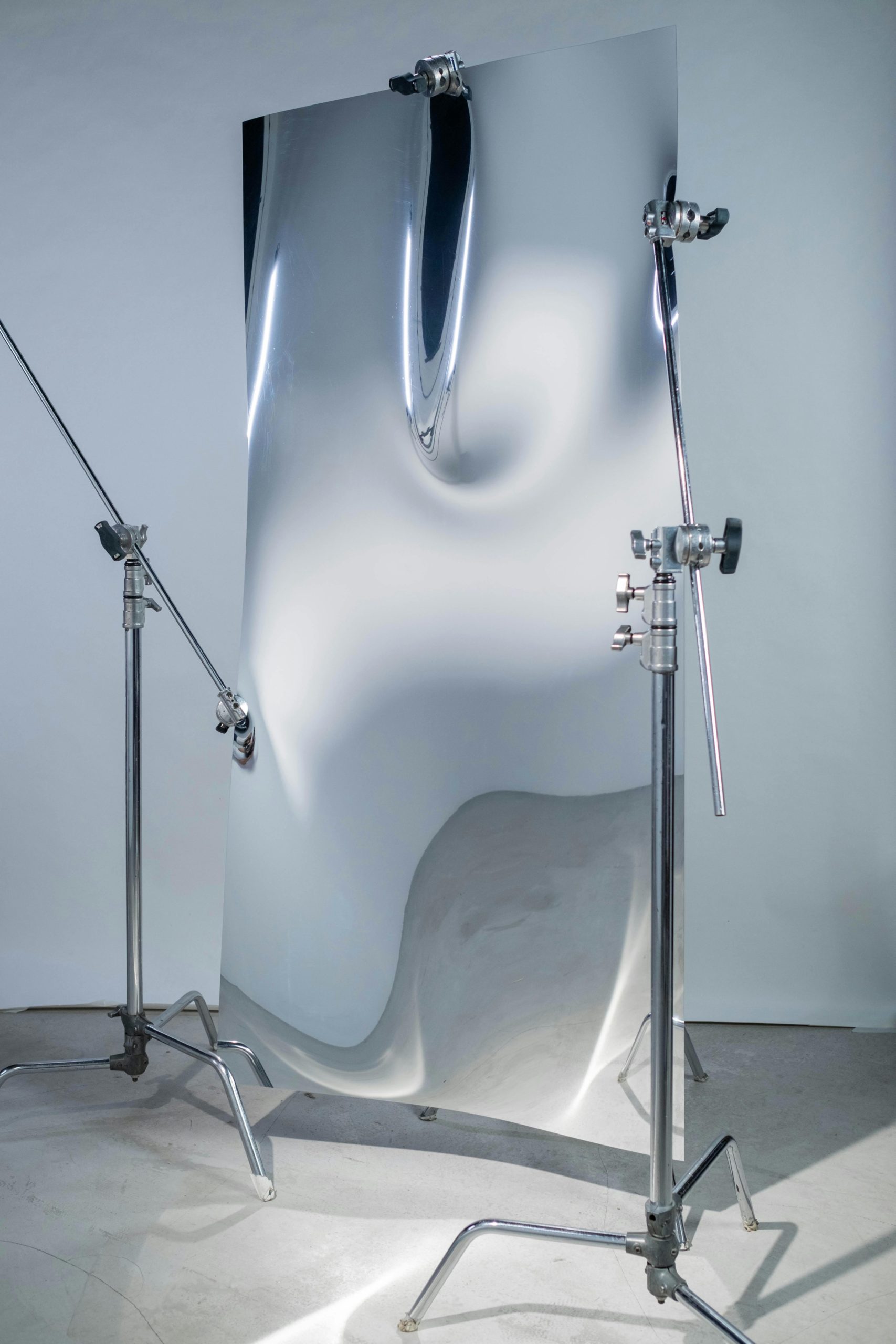Are you curious about the different types of microphone connectors commonly used in the podcasting world? Look no further! In this article, we will uncover the most common microphone connectors, shedding light on their purpose and compatibility. Whether you are an experienced podcaster or just getting started, understanding these connectors will help you choose the right equipment and ensure seamless audio recording for your podcast interviews or solo shows. So, let’s jump right in and explore the world of microphone connectors!
Understanding the Importance of Microphone Connectors
Role of different connectors for microphones
When it comes to microphone technology, connectors play a crucial role in ensuring seamless communication between the microphone and other devices in the audio production chain. Microphone connectors serve as the interface that allows the transfer of audio signals from the microphone to a mixer, audio interface, or other recording equipment. Without the appropriate connectors, it would be impossible to connect and integrate microphones into audio setups effectively.
Different types of connectors have been developed over time, each with its own unique characteristics and specifications. It is essential to understand the role of these connectors to choose the right one for your recording needs. The type of connector used can have a significant impact on the overall sound quality, signal strength, and reliability of the microphone setup.
Impact on sound and production quality
The choice of microphone connector can have a direct impact on the sound and production quality of audio recordings. A well-designed and properly connected connector can ensure a clean and uninterrupted audio signal transmission, resulting in high-fidelity sound reproduction.
On the other hand, using an incompatible or low-quality connector can introduce unwanted noise, signal degradation, and even audio dropouts. Poorly engineered connectors may also be prone to connection issues, leading to intermittent or unreliable audio connections.
To achieve professional-quality audio recordings, it is crucial to select connectors that provide a secure and reliable connection, with minimal interference and signal loss. Understanding the pros and cons of different microphone connectors can help you make an informed choice that suits your specific recording needs.
History of Microphone Connectors
Evolution of microphone connectors
The history of microphone connectors dates back to the early days of audio technology. In the late 19th century, when the first microphones were developed, connectors were not standardized, and each microphone manufacturer had their own unique connector design. This lack of standardization made it challenging to connect different microphones to recording equipment, limiting compatibility and interoperability.
In the early 20th century, as the audio industry began to grow rapidly, the need for standardized connectors became evident. The emergence of the XLR connector in the 1950s marked a significant milestone in the evolution of microphone connectors. The XLR connector, with its three-pin design, became widely adopted in professional audio applications due to its robustness, balanced signal transmission capabilities, and ease of use.
Advent of modern microphone connectors
With the advancement of technology and the increasing demand for audio solutions in various industries, newer types of connectors have emerged to cater to different recording requirements. RCA connectors, commonly known as phono connectors, gained popularity as a consumer-oriented option due to their simplicity and compatibility with home audio equipment.
The advent of digital audio and the rise of computer-based recording brought about the introduction of USB microphone connectors. USB connectors allowed microphones to connect directly to computers, bypassing the need for external audio interfaces. This convenience made USB microphones a popular choice in podcasting and other digital audio applications.
TRS (Tip-Ring-Sleeve) and TS (Tip-Sleeve) connectors are also widely used in the audio industry. TRS connectors, commonly referred to as stereo jacks, are versatile connectors that can carry both balanced and unbalanced signals. TS connectors, on the other hand, are unbalanced mono connectors commonly found in guitar cables and other instruments.
Miniature connectors, such as the popular 3.5mm mini-jack, are widely used in portable audio devices and consumer electronics due to their compact size and compatibility with headphones and microphones. Microdot connectors, although less common, offer a small yet durable connection solution for sound production applications where size and reliability are paramount.

XLR Connectors
Introduction to XLR connectors
XLR connectors are one of the most widely used and reliable connectors in the audio industry. They consist of three pins: one for the positive audio signal (pin 2), one for the negative audio signal (pin 3), and one for the ground (pin 1). This balanced design helps minimize noise interference and ensures high-quality audio signal transmission.
Pros and Cons of XLR connectors
One of the main advantages of XLR connectors is their robustness and durability. They are designed for professional use and can withstand frequent plugging and unplugging without compromising the connection quality. The locking mechanism of XLR connectors provides a secure connection, preventing accidental disconnections during recordings or live performances.
XLR connectors also excel in noise rejection, making them ideal for professional audio applications in studio environments or on stage. Their balanced design helps eliminate common mode noise and interference, resulting in cleaner audio signals.
However, XLR connectors can be bulkier and more expensive than other types of connectors. They are commonly used in broadcast setups, recording studios, and live sound applications where sound quality and reliability are of utmost importance.
Uses of XLR connectors in broadcasting
XLR connectors are widely used in broadcasting due to their superior audio quality and noise rejection capabilities. They are commonly employed in professional microphones, audio mixing consoles, and other broadcast equipment. XLR connectors provide a standardized and reliable connection across various broadcasting setups, ensuring consistent and high-fidelity sound reproduction.
RCA Connectors
Basics of RCA connectors
RCA connectors, also known as phono connectors, are widely used in consumer audio applications. They consist of a center pin for the signal and an outer ring as the ground. RCA connectors are typically color-coded, with red representing the right audio channel and white or black representing the left audio channel.
Advantages and Disadvantages of RCA connectors
One of the main advantages of RCA connectors is their simplicity and ease of use. They are commonly found in home theater systems, audio receivers, and other consumer audio equipment. RCA connectors are also relatively inexpensive and widely available, making them accessible to a broad range of users.
However, RCA connectors are not as robust or reliable as XLR connectors. They are more prone to interference and signal loss, especially over longer cable lengths. RCA connectors are typically used in scenarios where sound quality is not critical, such as connecting audio sources to home stereo systems or televisions.
Areas where RCA connectors are used
RCA connectors are commonly used in consumer-level audio setups, including home theaters, stereo systems, and audio-visual equipment. They are suitable for connecting DVD players, gaming consoles, and other audio devices to amplifiers or receivers. RCA connectors are also prevalent in the DJ industry, where they are used to connect turntables and mixers.

USB Microphone Connectors
Understanding USB Microphone connectors
USB microphone connectors have gained popularity with the rise of podcasting and digital audio recording. Unlike traditional connectors, USB connectors allow microphones to connect directly to computers without the need for an external audio interface. USB connectors transmit both audio signals and power, making them a convenient all-in-one solution for desktop recordings.
Exploring the benefits and drawbacks of USB connectors
One significant advantage of USB connectors is their plug-and-play functionality. They are relatively easy to set up and require minimal technical knowledge, making them suitable for beginners or users who want a hassle-free recording experience. USB connectors also provide a digital audio interface, enabling direct integration with recording software on computers.
However, USB connectors may not offer the same level of audio quality or reliability as XLR connectors in professional recording environments. The digital-to-analog converters (DACs) within USB microphones may not achieve the same fidelity as dedicated audio interfaces. USB microphones are primarily designed for simple recording applications and may not support advanced features or customization options.
Preferred uses of USB connectors
USB connectors are commonly preferred in podcasting, voice-over work, and other digital audio applications where convenience and ease of use are essential. They are popular among content creators who record on their computers, as USB microphones offer a straightforward setup and eliminate the need for additional equipment. USB connectors also find utility in remote recording setups or on-the-go recording situations due to their portability and compatibility.
TRS Connectors
Insight into TRS connectors
TRS connectors, also known as stereo jacks, consist of three conductors: the tip, ring, and sleeve. They are commonly used in headphones, musical instruments, audio cables, and auxiliary inputs/outputs. TRS connectors are versatile, as they can carry both balanced and unbalanced audio signals.
Positive and negative aspects of TRS connectors
One of the advantages of TRS connectors is their flexibility in transmitting various types of audio signals. With the right cable and connection, TRS connectors can carry stereo audio signals, balanced mono signals, or even control signals using the additional ring conductor. They are also widely available and compatible with a diverse range of audio equipment.
However, TRS connectors may not be suitable for certain professional audio applications that require higher signal integrity, such as long cable runs or critical recording environments. They are more susceptible to interference and signal degradation compared to XLR connectors. Additionally, incorrectly connecting TRS connectors can result in phase cancellation or improper signal routing.
Common uses for TRS connectors in audio industry
TRS connectors find extensive usage in the audio industry due to their versatility and compatibility. They are commonly used for headphones, where the TRS connector connects to the audio source and provides stereo sound output. TRS connectors are also used in musical instruments, connecting guitars, keyboards, and other equipment to amplifiers or audio interfaces. They can also be found in audio cables, allowing for flexibility in connecting different audio devices.

TS Connectors
Getting acquainted with TS connectors
TS connectors, also referred to as mono jacks, consist of two conductors: the tip and sleeve. Unlike TRS connectors that carry stereo or balanced signals, TS connectors are primarily used for unbalanced mono audio connections.
Weighing the pros and cons of TS connectors
One of the advantages of TS connectors is their simplicity and compatibility. They are commonly used in guitar cables, where the TS connector connects the guitar to the amplifier or other audio devices. TS connectors are also widely available and cost-effective, making them a popular choice in musical instrument applications.
However, TS connectors have limitations when it comes to noise rejection and audio signal quality compared to more advanced connectors like XLR or TRS. They are unbalanced connectors and can be susceptible to interference over longer cable runs or in noisy environments.
Domains where TS connectors are prevalent
TS connectors are prevalent in the music industry, particularly in guitar and bass applications. They are commonly used in instrument cables to establish a direct connection between the instrument and the amplifier. TS connectors also find utility in other audio equipment where unbalanced audio connections are sufficient, such as effects pedals and audio mixers.
Miniature Connectors
Introduction to Miniature connectors
Miniature connectors, often represented by the 3.5mm mini-jack, have become ubiquitous in portable audio devices and consumer electronics. These connectors are small in size, allowing for compact designs in headphones, smartphones, laptops, and other devices.
Exploring pros and cons of Miniature connectors
One of the main advantages of Miniature connectors is their widespread compatibility. They are commonly used for connecting headphones or earphones to audio devices, making them convenient for personal listening experiences. Miniature connectors are also often found in line-level inputs and outputs, enabling connections to various audio equipment.
However, their small size and design make them more prone to wear and tear compared to larger connectors like XLR or TRS. Frequent plugging and unplugging can lead to connector damage or connection issues. In addition, Miniature connectors are typically unbalanced, which means they may be more susceptible to interference in certain audio environments.
Widespread uses of Miniature connectors
Miniature connectors are widely used in consumer electronics, predominantly in portable audio devices. They are commonly found in smartphones, tablets, laptops, and MP3 players, allowing users to connect headphones or earphones for personal audio listening. Miniature connectors also find applications in car stereo systems, portable speakers, and other audio devices designed for on-the-go use.

Microdot Connectors
Grasping the concept of Microdot connectors
Microdot connectors are small and circular connectors that provide a secure and compact connection for sound production applications. They are commonly used in high-end audio systems, wireless microphone systems, and other professional sound production equipment.
Analysing benefits and drawbacks of using Microdot connectors
One significant advantage of Microdot connectors is their size and versatility. They are incredibly compact and lightweight, making them ideal for applications where size and weight are critical factors. Microdot connectors also offer robust and reliable connections, ensuring minimal signal loss and interference.
However, the use of Microdot connectors is relatively limited compared to more common connectors like XLR or TRS. They are less prevalent and less compatible with standard audio equipment, requiring specific adapters or interfaces for integration. The size and delicate nature of Microdot connectors also require careful handling to avoid accidental damage.
Various uses of Microdot connectors in sound production
Microdot connectors find extensive use in professional sound production applications that demand compact and reliable connections. They are commonly used in wireless microphone systems, lavalier microphones, and headset microphones. The small size of Microdot connectors allows for inconspicuous placement and mobility, making them suitable for theater performances, broadcast productions, and live events.
How to Properly Connect and Disconnect Microphone Connectors
Step-by-step guide for connecting microphone connectors
- Before connecting any microphone connector, ensure that all devices are powered off to avoid any potential electrical damage.
- Identify the appropriate connector for your microphone and equipment. XLR connectors, for example, have three pins and require a corresponding XLR input.
- Align the connector with the input jack on the receiving device. For XLR connectors, make sure the pins align correctly.
- Gently push the connector into the jack until it is fully inserted. Do not force the connector, as it can cause damage.
- Once the connector is securely connected, tighten any locking mechanisms if applicable.
Precautions to handle connectors
To ensure the longevity and reliability of microphone connectors, it is important to handle them with care. Here are some precautions to keep in mind:
- Avoid forcefully inserting or extracting connectors, as this can damage the pins or jack.
- Keep connectors clean and free from dirt, dust, or moisture. Use a soft cloth or compressed air to remove any debris.
- Protect connectors from excessive bending or strain on the cable, as this can weaken the connection or cause internal damage.
- Store connectors in a dry and safe location when not in use to prevent accidental damage.
Techniques for safely disconnecting the connectors
Disconnecting microphone connectors properly is just as important as connecting them. Follow these steps to safely disconnect microphone connectors:
- Ensure that all devices connected to the microphone are powered off before disconnecting any cables.
- Firmly grasp the connector, not the cable, and gently pull it straight out from the input jack.
- Never pull on the cable itself, as this can damage the internal wiring or strain the connector.
- Store the connectors in a safe place to prevent damage and tangling.
By following these guidelines, you can maintain the integrity of your microphone connectors and ensure reliable connections for your audio recordings and performances.
In conclusion, understanding the importance of microphone connectors is crucial for achieving high-quality audio recordings and productions. The choice of a connector can impact the sound quality, reliability, and compatibility of a microphone setup. Whether it’s the robustness of XLR connectors, the convenience of USB connectors, or the versatility of TRS connectors, each type has its own advantages and disadvantages. By considering the specific requirements of your recording applications and equipment, you can make informed decisions when selecting and utilizing microphone connectors. Remember to handle the connectors with care, follow proper connection and disconnection techniques, and protect them from potential damage. With the right connectors and proper handling, you can enhance your sound production capabilities and achieve exceptional audio results.

